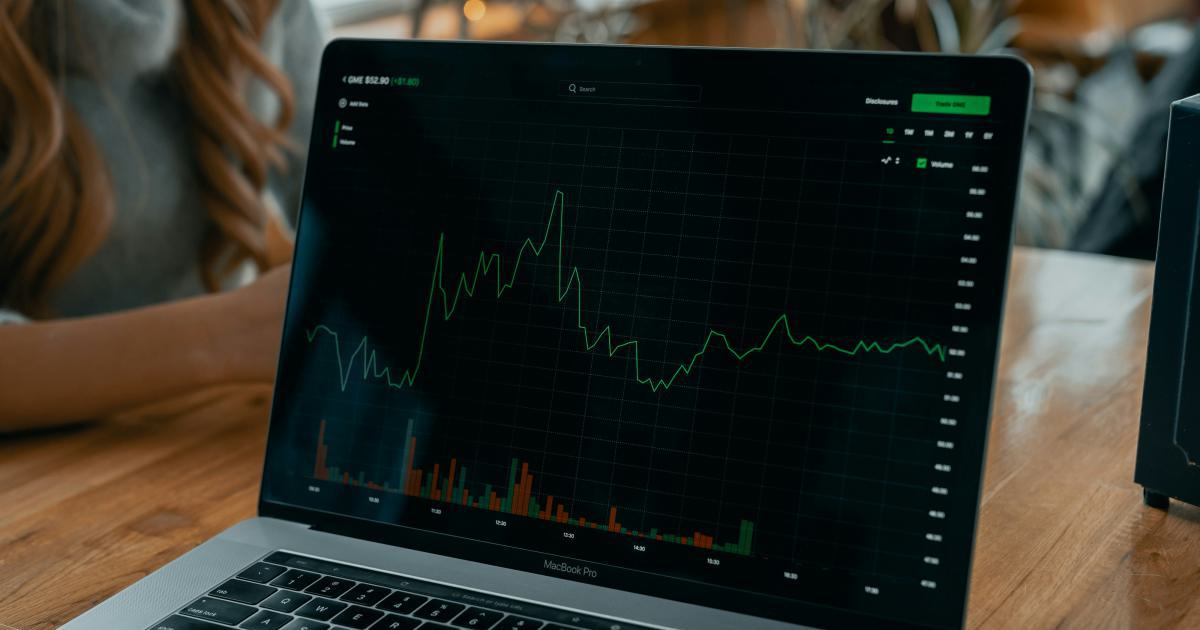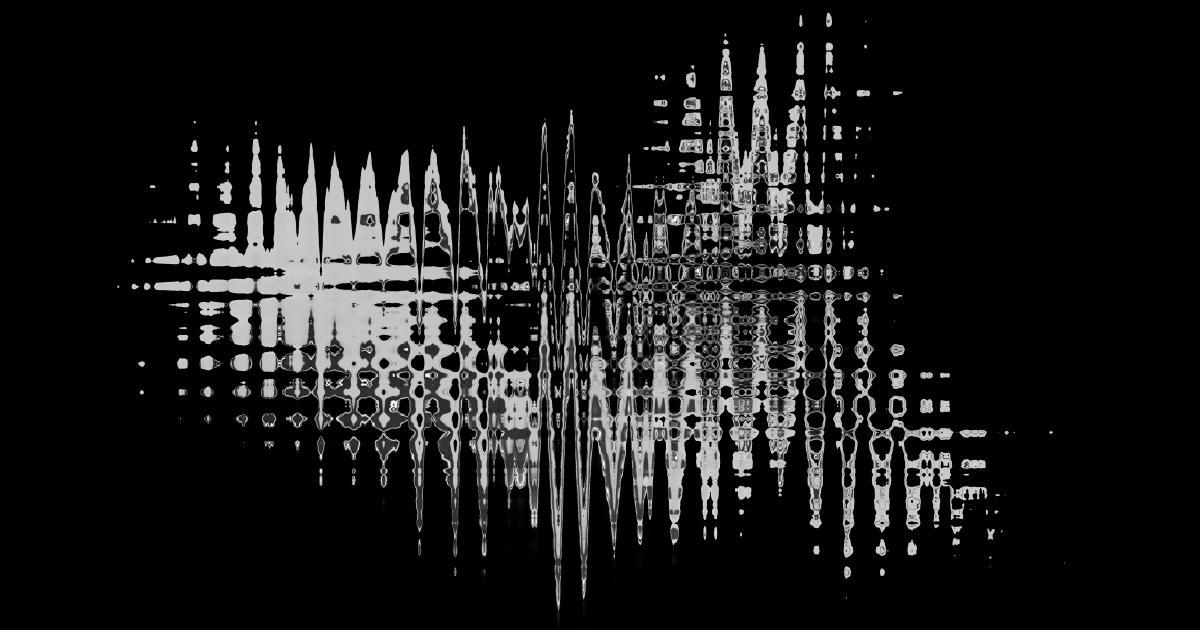How to Use Volume Indicators for Swing Trading

Volume indicators for swing trading are essential tools that help traders dive deeper into market dynamics by analyzing the trading volume behind price movements. By incorporating these indicators into your strategy, you can validate trends, recognize potential reversals, and ultimately make better-informed trading decisions. This article will explore the intricacies of volume indicators for swing trading, detailing the key types, strategies, and real-world applications that can elevate your trading practices.
Introduction to Volume Indicators in Swing Trading
Swing trading aims to capture gains in a stock (or any financial instrument) over a period of days or weeks. Unlike day trading, which demands rapid decision-making in real-time, swing trading relies on identifying trends and patterns that may unfold over several days. One of the most robust methods for confirming these trends is by using volume indicators. These indicators provide a unique insight into the strength, direction, and sustainability of a trend, as they measure the number of shares or contracts traded over a specific period.
Volume indicators reveal more than just the movement of prices. They offer context on market participation. For instance, a price change accompanied by a high trading volume is often more reliable than one with low volume. This reliability is crucial when trading swings, as false breakouts and reversals can quickly turn a potentially profitable trade into a loss if not properly verified. By harnessing volume data, traders can obtain a clearer picture of market behavior, enabling them to time their entries and exits more accurately.
In swing trading, the integration of volume analysis helps confirm whether the price movement is consensual among market participants. A typical strategy involves comparing the volume during an upward move against the volume during a downward move. Such comparisons may indicate if a rising price is truly supported by market strength or if it is merely a transient event. Moreover, identifying divergences between price trends and volume trends offers critical clues about impending reversals.
Beyond the basic premise of confirming price trends, volume indicators serve several practical purposes. They aid in identifying accumulation (when smart money is buying) and distribution (when smart money is selling). Savvy traders use these clues to anticipate significant market moves and adjust their positions proactively.
Additionally, volume indicators can serve as a risk management tool in swing trading. Understanding the volume context of a price move allows traders to adjust their stop-loss and take-profit levels more effectively. When volume data indicates weak participation, even seemingly strong price moves may not be sustainable, prompting a more conservative approach.
Overall, learning how to use volume indicators for swing trading enhances your market analysis, ensuring that your trading plan accounts for both price and the underlying strength of the market. This dual confirmation process is what separates skilled swing traders from those who rely solely on price action.

Understanding the Fundamentals of Volume Indicators
Volume indicators are mathematical calculations based on volume data plotted on trading charts. They help to visualize the relationship between price and volume, providing insights into market sentiment and potential future price movements.
What Are Volume Indicators?
Volume indicators translate raw volume data into visual insights. They help identify patterns such as increases or decreases in trading activity, which might signal a change in market sentiment. Some of the most common volume indicators include:
On-Balance Volume (OBV): This indicator accumulates volume by adding or subtracting figures based on the direction of price movement. A rising OBV indicates positive volume pressure, whereas a falling OBV may imply negative pressure.
Volume Rate of Change (VROC): VROC measures the speed at which volume is changing. When rapid changes occur, it may signal a forthcoming shift in the trend.
Accumulation/Distribution Line (A/D Line): The A/D line looks at the relationship between the closing price and the trading range and uses volume to determine whether the market is under accumulation (buying pressure) or distribution (selling pressure).
Chaikin Money Flow (CMF): CMF calculates the amount of money flowing in and out of a security over a set period, integrating both volume and price data to assess market strength.
Why Volume Indicators Matter in Swing Trading
Volume indicators bridge the gap between price action and market sentiment. Here’s why they matter for swing trading:
Trend Confirmation: Rising volume during a price uptrend or declining volume during a price correction confirms the strength and sustainability of the trend.
Divergence Detection: When price movements do not align with changes in volume, it suggests potential reversals. For example, a price rise on declining volume might indicate that the upward trend is weakening.
Risk Management: Volume indicators help fine-tune entry and exit points, offering greater precision in setting stops and targets.
Market Sentiment: They provide a glimpse into the collective sentiment of traders, which can be critical in volatile markets where emotions sometimes drive price movements rather than fundamentals.
How to Read Volume Indicators
Interpreting volume indicators correctly requires understanding the interplay between price and volume. Here are some actionable steps:
Look for Confirmation: Always check that changes in trading volume confirm the underlying price action. A bullish signal in price should be supported by increasing volume.
Identify Divergences: Watch for scenarios where price and volume diverge. For instance, if a price trend continues but volume starts to taper off or reverse, it could be a precursor to a trend reversal.
Combine with Other Indicators: Volume indicators are most powerful when used alongside other technical tools such as moving averages, trend lines, and oscillators.
Assess Historical Data: Comparing current volume levels with historical averages can help determine whether the current trading session is unusually active or subdued.
Learning these fundamentals is crucial for any swing trader looking to harness the power of volume indicators for swing trading, as they offer a window into the market's inner workings.
Advanced Strategies Using Volume Indicators for Swing Trading
With a solid understanding of the basics, it’s time to explore advanced strategies that integrate volume indicators into your swing trading plan. These strategies can help you pinpoint high-probability trades and better manage risk.
Trend Identification and Confirmation
One effective approach in swing trading is using volume indicators to confirm trends. Before entering a trade, verify that the price movement aligns with supportive volume. Here's a step-by-step process:
Identify the current trend using price patterns and moving averages.
Check the accompanying volume to ensure it’s in line with the trend. For example, during an uptrend, look for sustained increasing volume.
Observe key events such as breakouts or pullbacks and ensure that volume spikes coincide with these price changes.
During a pullback, look for increasing volume as a signal of potential continuation once the trend resumes.
When the trend is supported by robust volume, your confidence in entering a trade increases. Conversely, if volume is lacking, it might be best to wait for further confirmation before committing your capital.
Divergence Analysis
Divergences between price and volume are powerful indicators that the market may be preparing for a reversal. Consider these common scenarios:
- Bullish Divergence: Occurs when prices make a lower low, but volume or an indicator like OBV makes a higher low. This suggests that selling pressure is waning, and a rebound may be imminent.
- Bearish Divergence: Occurs when prices make a higher high, but volume fails to follow, indicating that the upward momentum is weakening.
To implement divergence analysis, you need meticulous monitoring. Compare current volume trends with previous swings and consider integrating additional tools like relative strength index (RSI) to validate the signals further.
Volume Clusters and Breakouts
Volume clusters refer to periods when trading volume significantly deviates from the norm. These clusters often precede breakouts or breakdowns. Traders can use these signals as follows:
Pre-Breakout Analysis: Look for unusually high volume in a narrow trading range. This phase indicates potential accumulation before a breakout.
Confirm Breakouts: Once the price breaks out of a significant support or resistance level, an accompanying volume surge is essential to validate the movement.
Set Entry/Exit Levels: Use volume data to establish more precise entry and exit points. If a breakout occurs with low volume, it might be a false signal, prompting caution.
Combining Volume with Technical Indicators
Integrating volume indicators with other technical analysis tools can create a more comprehensive strategy. For example, combine volume data with candlestick patterns to identify potential reversal areas. Candlesticks that signal a reversal accompanied by increasing volume provide a double confirmation that can enhance trade reliability.
Case Study: The OBV and Moving Average Strategy
Consider a scenario where you combine the On-Balance Volume (OBV) indicator with a simple moving average (SMA) crossover strategy:
- Enter a long position when the OBV is trending up, and the price crosses above a key SMA.
- Confirm that volume spikes occur during the crossover to validate the strength of the move.
- Use the SMA as a dynamic support level, adjusting your stop-loss accordingly.
This strategy leverages both price action and volume signals, reducing the risk of false signals and ensuring a more robust decision-making process.

Tools and Platforms for Volume Indicator Analysis
To effectively utilize volume indicators in swing trading, choosing the right tools and platforms is critical. Many trading platforms offer integrated volume analysis tools, allowing traders to access real-time data and historical volume trends.
Popular Trading Platforms
Several platforms are renowned for their robust technical analysis capabilities:
- TradingView: Offers a comprehensive suite of charting tools, including various volume indicators. TradingView’s community scripts allow users to customize and combine several indicators.
- MetaTrader 4/5 (MT4/MT5): Widely used for forex trading, MT4/MT5 offers easy integration of volume indicators, along with customizable expert advisors (EAs) for automating swing trading strategies.
- Thinkorswim: Provided by TD Ameritrade, Thinkorswim offers advanced charting and technical analysis tools, including volume indicators, which are essential for traders who rely on a multi-faceted approach.
- NinjaTrader: A platform geared toward active traders that provides extensive customization options for chart analysis, including volume-based studies.
Essential Features to Look For
When selecting a trading platform for swing trading that relies on volume analysis, consider these features:
Real-time data feed with minimal latency.
A wide array of built-in volume indicators with customization options.
The ability to overlay volume indicators with other technical tools like moving averages and oscillators.
Historical data analysis tools to compare current volume trends with past performance.
Integration with automated trading systems and alerts for volume spikes or divergences.
Integrating Third-Party Plugins and Scripts
Many platforms support third-party plugins or scripts developed by the trading community. These scripts can further enhance the functionality of volume indicators by adding unique features such as custom divergence detection or dynamic volume clustering. Experimenting with these tools can provide you with the edge needed in a competitive market.
By selecting the right trading platform and tools, you can ensure that your analysis of volume indicators for swing trading is both comprehensive and efficient, allowing for faster adaptation to changing market conditions.
Risk Management and Mitigation Strategies Using Volume Analysis
While volume indicators can be powerful, incorporating them into a comprehensive risk management strategy is essential. Without proper risk management, even a well-supported signal might lead to unexpected losses.
Setting Stop-Loss and Take-Profit Points
Volume analysis helps refine your stop-loss and take-profit levels. When volume confirms a trend, you may set a wider stop-loss to account for natural market fluctuations. Conversely, during low volume periods, tighter stops might be advisable. Use the following steps:
Identify key support and resistance levels using previous volume clusters.
Evaluate whether a volume spike is supporting the current trend or if it appears sporadic.
Enter trades only when both price action and volume indicators align to reduce the potential for false signals.
Position Sizing and Leverage Considerations
Proper position sizing is crucial in swing trading. Consider the following strategies:
- Adjust position sizes based on volume confirmation; higher volume trends may allow for slightly larger positions.
- Use leverage cautiously in periods of low volume to prevent outsized losses due to increased volatility.
- Diversify your positions across different sectors or instruments to avoid concentration risk.
Dealing with False Signals
No indicator is infallible, and volume indicators can occasionally produce false signals. To mitigate this risk:
Cross-reference volume data with other technical indicators or trend analysis.
Wait for confirmatory signs, especially in the early stages of a potential trend reversal.
Monitor market news and external factors that might be influencing volume independently of price action.
Regularly review and adjust your strategy based on performance data and market conditions.
Building a Trading Journal
Documenting your trades is an important discipline. Record each trade with its associated volume analysis, including entry/exit points, stop-loss/take-profit levels, and the rationale behind your decision. Over time, this practice will reveal patterns in your trading behavior and help you refine your approach by learning from past mistakes.

Best Practices for Implementing Volume Indicators
For traders new to volume indicators, developing a systematic approach is key. Here are some best practices:
Continuous Learning and Practice
- Dedicate time to learning about various volume indicators and their historical performance.
- Use simulation tools or paper trading to test your strategy without risking actual capital.
- Analyze past trades and adjust your strategy based on retrospective volume data.
Combining with Fundamental Analysis
Even though technical analysis drives swing trading, don’t ignore fundamental factors. Volume spikes can sometimes be triggered by news or economic data releases. Therefore:
- Stay informed about market events and economic indicators.
- Cross-reference volume signals with fundamental news to avoid surprises.
- Adjust your strategy based on the broader market context and sentiment.
Regularly Updating Your Strategy
Markets evolve, and so should your trading strategy. Volume indicators that worked in one market environment might need adjustment in another. Periodically review:
- Historical performance of your trades using volume data.
- Market cycles and volatility patterns.
- The efficacy of the volume indicators you rely on.
- Any new tools or scripts developed by the trading community that might enhance your analysis.
Avoiding Over-Reliance on a Single Indicator
While volume indicators are powerful, over-reliance on any single metric can be dangerous. Always corroborate the signals with:
- Price patterns (e.g., support/resistance levels, candlestick formations).
- Other technical indicators (e.g., MACD, RSI, moving averages).
- Broader market sentiment and macroeconomic factors.
Integrating Real-World Case Studies
A practical understanding of volume indicators in swing trading comes from analyzing real-world examples. Here are two illustrative case studies that demonstrate how traders have used volume analysis to improve their trade outcomes.
Case Study 1: Tech Stock Breakout
In this case study, a trader was watching a technology stock that had been trading within a tight range for several weeks. Despite the stable price, the volume began to increase significantly during the final days of consolidation. The trader recognized this as an accumulation phase, where smart money was gradually entering the position. When the price eventually broke above the resistance level, a substantial surge in volume confirmed the breakout. By entering shortly after the volume spike and using appropriate stop-loss levels informed by volume clusters, the trader captured a significant portion of the upward move in the ensuing weeks.
The key takeaway: When a stock breaks out with strong volume confirmation, it often signals a robust trend that can be leveraged for swing trading gains.
Case Study 2: Divergence Signaling a Reversal
Another trader focused on a major industry player whose stock experienced a prolonged uptrend. Over time, the price made higher highs, yet the OBV indicator began to diverge by failing to register corresponding new highs in volume. Recognizing this bearish divergence, the trader took a more cautious stance. Instead of adding to their long position, they began scaling out and eventually reversed their position after confirming the trend reversal with additional technical indicators. This strategy helped the trader avoid holding through a significant downturn, illustrating the value of using volume indicators to sense weakening momentum.
Both case studies underscore the importance of applying volume indicators for swing trading not as standalone tools but as part of a broader, integrated trading strategy.
Combining Volume Indicators with Other Analytical Tools
While volume indicators are indispensable, their effectiveness increases dramatically when combined with other forms of technical analysis. This multi-layered approach can lead to a more accurate and robust trading plan.
Integrative Technical Analysis
The integration of volume indicators with other technical tools involves:
- Using moving averages to smooth out price data and identify the underlying trend.
- Applying momentum oscillators like the RSI or Stochastic to gauge the strength of movements.
- Utilizing candlestick patterns and chart formations to pinpoint reversal points.
For example, when a bullish candlestick reversal pattern (such as a hammer or engulfing pattern) coincides with a significant volume spike, the combined signal becomes exceedingly reliable. In such cases, traders have greater confidence that the move is supported by solid market participation.
Strategy Refinement Through Backtesting
One effective method to integrate volume indicators with other tools is through robust backtesting. Modern trading software allows you to simulate trades using historical data to see how your combined strategy might have performed in various market conditions. Key actions include:
- Testing different combinations of volume indicators and technical analysis tools.
- Adjusting time frames to fine-tune the sensitivity of your signals.
- Evaluating the risk/reward ratio of different strategies and optimizing your stop-loss and take-profit levels based on historical performance.
Successful traders often adopt a systematic approach by fine-tuning their strategies over time. They keep comprehensive records of backtested performance and update their methods as market conditions evolve, ensuring that the reliance on volume indicators for swing trading remains both relevant and effective.
Practical Tips for New Traders
- Start simple: Master the basics of one volume indicator before layering on additional tools.
- Practice consistency: Stick to a predefined trading plan that clearly outlines entry, exit, and risk management criteria.
- Maintain discipline: Volume signals should enhance your strategy rather than dictate impulsive decisions. Always wait for full confirmation before acting.
Future Trends and Innovations in Volume Analysis for Swing Trading
The field of technical analysis is continually evolving. As technology advances, so do the tools available for analyzing volume. Enhanced algorithms, machine learning, and real-time data integration are already reshaping how volume indicators are interpreted. Some trends to watch in the near future include:
Artificial Intelligence and Machine Learning
- AI-based systems can analyze massive datasets far beyond human capability, detecting subtle volume patterns and anomalies.
- Machine learning models can adapt and refine their predictions over time, providing traders with ever-more accurate signals.
- Automated systems can combine volume analysis with other indicators seamlessly, reducing response time and improving consistency.
Real-Time Data and High-Frequency Trading
- As data feeds become quicker and more reliable, traders can react to volume changes almost instantaneously.
- High-frequency trading platforms are integrating volume indicators into their algorithms, leading to faster, more precise decision-making.
- Innovations in cloud computing and big data analytics allow for multi-dimensional volume analysis that considers market conditions at unprecedented levels of detail.
Enhanced Customization and User-Defined Indicators
- Modern trading platforms are increasingly allowing traders to customize volume indicators and integrate them with personal trading strategies.
- User-defined scripts can incorporate multiple volume metrics into a single, cohesive signal, simplifying decision-making.
- Community-driven platforms encourage collaboration, leading to rapid innovation and refinement of volume analysis methods.
By staying informed about emerging trends, swing traders can adapt their approach and align their strategies with the most cutting-edge tools in the field.
Conclusion
Understanding and effectively utilizing volume indicators for swing trading can significantly enhance your market analysis and decision-making process. These indicators provide essential insights into market sentiment, trend strength, and potential reversals, acting as a robust supplement to traditional price-based analysis. By combining volume indicators with other technical tools, performing rigorous backtesting, and maintaining disciplined risk management, you can develop a comprehensive strategy that adapts to both calm and volatile market conditions.
This in-depth guide has examined everything from the basic concepts of volume indicators to advanced strategies and real-world case studies. Whether you are a beginner eager to learn the basics or an experienced trader looking to refine your approach, the principles outlined here are designed to empower you to achieve more reliable, profitable trade outcomes. Adopting a systematic approach to analyzing volume provides the dual advantage of enhanced trend confirmation and improved risk management, equipping you to navigate the complexities of the financial markets with confidence.
As the trading environment continues to evolve, staying updated on technological innovations and continuously adapting your strategies will be essential. Embrace the power of volume analysis, continuously refine your approach, and you may well find that what was once an overlooked factor becomes a cornerstone of your swing trading success.
Happy trading, and may your next swing be both profitable and well-informed!
Unleash the Power of Automated Trading Analysis
Are you struggling to keep up with the fast-paced trading world? TrendSpider empowers you with cutting-edge tools for optimal strategy execution.
Our automated technical analysis suite eliminates guesswork, backtests strategies, and delivers real-time alerts, saving you valuable time and effort.
Isla Wyndham
52 posts written





